ZX Spectrum vs Commodore 64 - My Computer is Better Than Yours
Ah, the olden days of home computing, when monitors were not only not LCD, but not even monitors. We used to use the house TV, or if you were really lucky a portable in your bedroom. Myself, for many years I had to use a black and white machine for my ZX Spectrum 48k. But at least it was mine, and I could play with it in my own room. Yes, I admit it, in the my-computer-was-better-than-yours wars that filled playgrounds of the 80s, I was firmly on the side of the Speccy.
That isn't to say I didn't like many aspects of the Commodore 64, it had a much better keyboard, at least until Amstrad bought the Spectrums and made the +2, sprite hardware and a really funky sound chip. Even when Sinclair added the advanced audio of the AY-3-8912, some three years after the original machines first arrived, the C64 still sounded better.
Now, many years later, I own a couple of C64s, the C versions with the nicer case, a couple of disk drives for it, oh my original ZX Spectrum 48K, a Spectrum+, a Spectrum+ 128k, a +2 and two +3s in various states of repair. I love both machines dearly, so I feel compelled to revisit that classic debate, which was the better machine? Was this the olden day equivalent of PS3 vs XBox360? Where one machine had the hardware, and the other had the games?
On this one, the ZX Spectrum won hands down. I can't comment on machine code, since I only ever coded the Z80 of the Speccy here, and I'm sure there was probably little to choose between them, but when it came to BASIC, despite it's bizarre input mechanism of one keyword per button, programming Sinclair's machine was actually very easy. Now admittedly, BASIC as a language is abhorrent, but if you think it looks bad now, you should have seen what it looked like on the Commodore.
The Spectrum's version was written by a company called Nine Tiles Networks Ltd, whilst the Commodore's was licensed from Microsoft. For many that would be reason to declare Sinclair a winner already, but for me it was always the fact that whenever myself and friends sat down to write the next great Football Manager game on our respective machines over the summer holidays, the C64 version always seemed to need POKEs and PEEKs to do anything remotely useful.
The C64 did have more RAM, but because it didn't tokenise any input, everything took up much more room. So all in all, for getting into programming, the Spectrum was where it was at, even more so when the 128k came along with a new ROM and the ability to enter code letter by letter rather than the one button per command method (with about thirty zillion shift key combinations).
Another easy won to declare a winner, despite the amazing work of Tim Follin on the humble Spectrum 48k and beyond, the great pieces by Rob Hubbard and co on the 128k versions, you only have to look at how many websites are dedicated to using the Spectrum as a music synthesiser to realise that there aren't many. The Commodore 64 on the other hand, still has a huge following for its SID sound chip, with people releasing MIDI cartridges every now and again, modifying them to become a full blown instrument, adding an additional SID chip to an existing unit.
The audio on this thing simply rocked! Everything sounded very synthy, but that wasn't a bad thing. You could even listen to music it generated whilst loading a game, in fact later on some games like Delta actually presented you with four sliding option bars that let you change the nature of the tune to alleviate the boredom. Which brings us neatly on to...
There is no point having great games if you have to wait hours for them to load. Here things were almost even, almost. The Spectrum soon developed funky loaders that decreased the wait time, whilst the C64 played you music whilst you waited, and in some cases you could even play a game of Space Invaders! Play a game whilst waiting to load a game? Great Scott!!!!
But the C64 had more RAM, so the games were generally slightly bigger and took longer to load. However if, like me, you copied a lot of games onto compilation tapes, the C64 had one huge advantage over the Speccy. It included tape control, it would stop the tape once the game had loaded, which meant no endless rewinding to work out where on a C90 the next game was kept.
Here is possibly the hardest thing to judge, because it's not as clear cut as you think. Yes, the C64 had muddy colours and a good line in anything providing it was brown or grey, but whack up the colour saturation of your TV and most of that was alleviated. Sure the Spectrum had a dreadful two colour per 8x8 pixel limitation that led to horrendous colour clashes, but many games worked around it.
The C64 had sprite and scrolling hardware capabilities, which made it excellent for an awful lot of arcade game genres. But it had one major limitation with colour, if you wanted to use more than two of them in an 8x8 pixel block, there was a cost, you lost half the horizontal resolution. This gave the games a very horizontal blockyness to them, which especially showed up when comparing games ported to of from the Spectrum.
Also, the Spectrum had a CPU clocked more than 3 times that of the C64, which gave it a speed advantage when it came to pushing pixels around. This wasn't an issue for titles that used sprites and scrolling, but if they used 3D graphics, or relied heavily on computation power, the C64 suffered a tad more than the Speccy.
Then when you had a game which used the full resolution of the C64 at the expense of colour, it would look the same as the Spectrum anyway, so many isometric games were indistinguishable on both platforms. So, in this category, I am almost tempted to declare a draw. Blocky colours are not exactly better than non-blocky monochromes, and vice versa.
But once you've got programmers that are working around the problem of colour clash on the Speccy, then suddenly you get beautiful games like Cybernoid and Exolon, or R-Type. Looking back with fresh eyes, there are very, very few, if any, C64 games that I could say were visually impressive. Yet countless Spectrum games look wondrous to me despite their age. I still prefer the colour blocky Spectrum graphics to the pixel blocky ones of the 64.
Surely this category is the one and only place that can deliver us a true winner in this debate? After all, when I was a kid it was ALL about the games. Trouble is, looking back things are less than clear. On the 64 there is no doubt that The Last Ninja series, Wizball, Impossible Mission and Armalyte are fantastic games typical of the system. Yet many games like Starglider, Tau Ceti and Elite were better on the Spectrum.
All I can really offer here is the unfair salute to the Spectrum on sheer numbers alone. It had more games, so looking back the number of classics written would inevitably be more. Of all the innovative titles that created new genres that I can remember, nearly all of them appeared on the Spectrum first, and were better on it too.
I'm sorry C64 fans, but the Spectrum was the better machine. If it could have had a SID chip in it as well, it would have been the most clear cut decision that nobody could argue with. That isn't to say the 64 wasn't brilliant itself, and I do so love it too. I just look back at all the games I used to play at home and round friends, and more of them were Speccy titles than 64 ones.
Sure when it came to pure arcade graphics, the C64 had an advantage with its funky audio and hardware sprite/scrolling assistance, but so many of the best games from the 8 bit era went beyond such things. Whilst I loved a shoot-em-up like R-Type, and still do, I also enjoyed isometric puzzle games, the bizarre school adventure that was Skooldaze, and I cannot tell a lie... I especially enjoyed 3D titles like I, Of the Mask.
And what's more, it's a trend that has continued with me through to this very day, with me shunning the NES and SNES in favour of the Amiga with it's more interesting catalogue of titles. I preferred the Dreamcast to the PS1 for the same reasons, and even now I'm glad I have a Wii rather than a PS3 or XBox 360, because the latter are what you get if driving games and FPS are your bag, and the former if you want oddball titles that the others just don't really offer in enough quantities.
That isn't to say I didn't like many aspects of the Commodore 64, it had a much better keyboard, at least until Amstrad bought the Spectrums and made the +2, sprite hardware and a really funky sound chip. Even when Sinclair added the advanced audio of the AY-3-8912, some three years after the original machines first arrived, the C64 still sounded better.
Now, many years later, I own a couple of C64s, the C versions with the nicer case, a couple of disk drives for it, oh my original ZX Spectrum 48K, a Spectrum+, a Spectrum+ 128k, a +2 and two +3s in various states of repair. I love both machines dearly, so I feel compelled to revisit that classic debate, which was the better machine? Was this the olden day equivalent of PS3 vs XBox360? Where one machine had the hardware, and the other had the games?
Programming
On this one, the ZX Spectrum won hands down. I can't comment on machine code, since I only ever coded the Z80 of the Speccy here, and I'm sure there was probably little to choose between them, but when it came to BASIC, despite it's bizarre input mechanism of one keyword per button, programming Sinclair's machine was actually very easy. Now admittedly, BASIC as a language is abhorrent, but if you think it looks bad now, you should have seen what it looked like on the Commodore.
The Spectrum's version was written by a company called Nine Tiles Networks Ltd, whilst the Commodore's was licensed from Microsoft. For many that would be reason to declare Sinclair a winner already, but for me it was always the fact that whenever myself and friends sat down to write the next great Football Manager game on our respective machines over the summer holidays, the C64 version always seemed to need POKEs and PEEKs to do anything remotely useful.
The C64 did have more RAM, but because it didn't tokenise any input, everything took up much more room. So all in all, for getting into programming, the Spectrum was where it was at, even more so when the 128k came along with a new ROM and the ability to enter code letter by letter rather than the one button per command method (with about thirty zillion shift key combinations).
Sound
Another easy won to declare a winner, despite the amazing work of Tim Follin on the humble Spectrum 48k and beyond, the great pieces by Rob Hubbard and co on the 128k versions, you only have to look at how many websites are dedicated to using the Spectrum as a music synthesiser to realise that there aren't many. The Commodore 64 on the other hand, still has a huge following for its SID sound chip, with people releasing MIDI cartridges every now and again, modifying them to become a full blown instrument, adding an additional SID chip to an existing unit.
The audio on this thing simply rocked! Everything sounded very synthy, but that wasn't a bad thing. You could even listen to music it generated whilst loading a game, in fact later on some games like Delta actually presented you with four sliding option bars that let you change the nature of the tune to alleviate the boredom. Which brings us neatly on to...
Loading Times
There is no point having great games if you have to wait hours for them to load. Here things were almost even, almost. The Spectrum soon developed funky loaders that decreased the wait time, whilst the C64 played you music whilst you waited, and in some cases you could even play a game of Space Invaders! Play a game whilst waiting to load a game? Great Scott!!!!
But the C64 had more RAM, so the games were generally slightly bigger and took longer to load. However if, like me, you copied a lot of games onto compilation tapes, the C64 had one huge advantage over the Speccy. It included tape control, it would stop the tape once the game had loaded, which meant no endless rewinding to work out where on a C90 the next game was kept.
Graphics
Here is possibly the hardest thing to judge, because it's not as clear cut as you think. Yes, the C64 had muddy colours and a good line in anything providing it was brown or grey, but whack up the colour saturation of your TV and most of that was alleviated. Sure the Spectrum had a dreadful two colour per 8x8 pixel limitation that led to horrendous colour clashes, but many games worked around it.
The C64 had sprite and scrolling hardware capabilities, which made it excellent for an awful lot of arcade game genres. But it had one major limitation with colour, if you wanted to use more than two of them in an 8x8 pixel block, there was a cost, you lost half the horizontal resolution. This gave the games a very horizontal blockyness to them, which especially showed up when comparing games ported to of from the Spectrum.
Also, the Spectrum had a CPU clocked more than 3 times that of the C64, which gave it a speed advantage when it came to pushing pixels around. This wasn't an issue for titles that used sprites and scrolling, but if they used 3D graphics, or relied heavily on computation power, the C64 suffered a tad more than the Speccy.
Then when you had a game which used the full resolution of the C64 at the expense of colour, it would look the same as the Spectrum anyway, so many isometric games were indistinguishable on both platforms. So, in this category, I am almost tempted to declare a draw. Blocky colours are not exactly better than non-blocky monochromes, and vice versa.
But once you've got programmers that are working around the problem of colour clash on the Speccy, then suddenly you get beautiful games like Cybernoid and Exolon, or R-Type. Looking back with fresh eyes, there are very, very few, if any, C64 games that I could say were visually impressive. Yet countless Spectrum games look wondrous to me despite their age. I still prefer the colour blocky Spectrum graphics to the pixel blocky ones of the 64.
Games
Surely this category is the one and only place that can deliver us a true winner in this debate? After all, when I was a kid it was ALL about the games. Trouble is, looking back things are less than clear. On the 64 there is no doubt that The Last Ninja series, Wizball, Impossible Mission and Armalyte are fantastic games typical of the system. Yet many games like Starglider, Tau Ceti and Elite were better on the Spectrum.
All I can really offer here is the unfair salute to the Spectrum on sheer numbers alone. It had more games, so looking back the number of classics written would inevitably be more. Of all the innovative titles that created new genres that I can remember, nearly all of them appeared on the Spectrum first, and were better on it too.
The Conclusion
I'm sorry C64 fans, but the Spectrum was the better machine. If it could have had a SID chip in it as well, it would have been the most clear cut decision that nobody could argue with. That isn't to say the 64 wasn't brilliant itself, and I do so love it too. I just look back at all the games I used to play at home and round friends, and more of them were Speccy titles than 64 ones.
Sure when it came to pure arcade graphics, the C64 had an advantage with its funky audio and hardware sprite/scrolling assistance, but so many of the best games from the 8 bit era went beyond such things. Whilst I loved a shoot-em-up like R-Type, and still do, I also enjoyed isometric puzzle games, the bizarre school adventure that was Skooldaze, and I cannot tell a lie... I especially enjoyed 3D titles like I, Of the Mask.
And what's more, it's a trend that has continued with me through to this very day, with me shunning the NES and SNES in favour of the Amiga with it's more interesting catalogue of titles. I preferred the Dreamcast to the PS1 for the same reasons, and even now I'm glad I have a Wii rather than a PS3 or XBox 360, because the latter are what you get if driving games and FPS are your bag, and the former if you want oddball titles that the others just don't really offer in enough quantities.

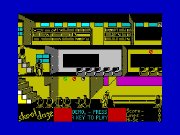
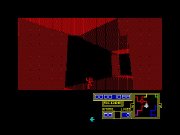
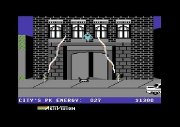



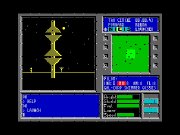

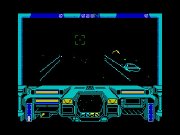
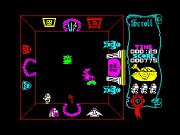
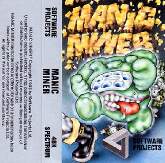














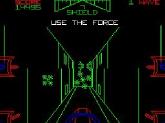
















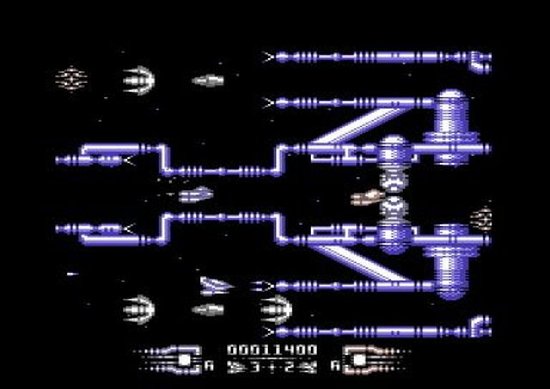











Your Opinions and Comments
Skool Daze was one of those classic games that followed in the wake of US Gold and Ultimate, amongst others. Once played, never forgotten. I had some emulators a few years ago but haven't fired them up in ages, I really need to dig them out I think...
I too am on the side of the Speccy as I was an avid Speccy user until 1991 when I finally upgraded to an Amiga.
I agree with a lot of what you say - some of the Spectrum games have aged very nicely and I return to many to play such as Exploding Fist, Green Beret, Exolon, Missile Defence, Manic Miner and Uridium.
A great and balanced article - and I have to take my hat off to the SID chip. Some of those tunes are nothing short of brilliant.
When I think about it though, we spent far more time around my house playing Spectrum games than we did playing C64 games around his.
I think I might have to write about how programmers these days don't know they're born!
As for graphics, you strangely forgot to mention that Commodore 64 games can scroll a much larger area than Spectrum games, and that when using hi-res sprites on a hi-res background, on the Commodore 64 sprites don't have colour clash problems with the background, unlike the Spectrum (yes, even at its full 320 x 200 maximum resolution). As you can see, it's not always true that you have to reduce horizontal resolution to avoid colour clashing on a Commodore 64.
I had a C64, my best friend of the time ad an Amiga 500. We actually spent more time playing C64 games at my place, but I don't think that means C64 was better than the Amiga. It's a matter of taste, and it also depends on the software we had available, of course.
I think you should improve your knowledge on the Commodore 64, there are many free resources available online nowadays.